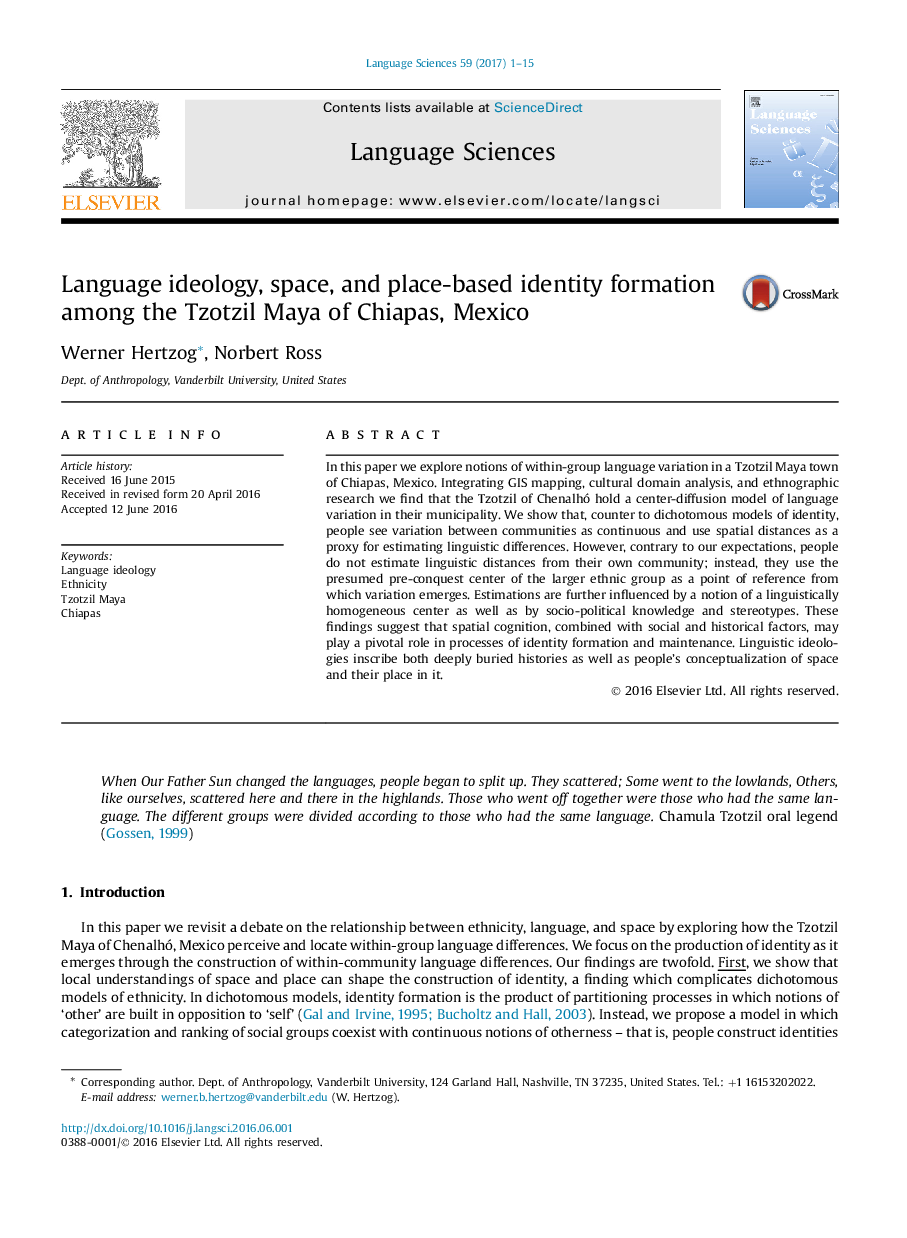| Article ID | Journal | Published Year | Pages | File Type |
|---|---|---|---|---|
| 1102953 | Language Sciences | 2017 | 15 Pages |
In this paper we explore notions of within-group language variation in a Tzotzil Maya town of Chiapas, Mexico. Integrating GIS mapping, cultural domain analysis, and ethnographic research we find that the Tzotzil of Chenalhó hold a center-diffusion model of language variation in their municipality. We show that, counter to dichotomous models of identity, people see variation between communities as continuous and use spatial distances as a proxy for estimating linguistic differences. However, contrary to our expectations, people do not estimate linguistic distances from their own community; instead, they use the presumed pre-conquest center of the larger ethnic group as a point of reference from which variation emerges. Estimations are further influenced by a notion of a linguistically homogeneous center as well as by socio-political knowledge and stereotypes. These findings suggest that spatial cognition, combined with social and historical factors, may play a pivotal role in processes of identity formation and maintenance. Linguistic ideologies inscribe both deeply buried histories as well as people's conceptualization of space and their place in it.
